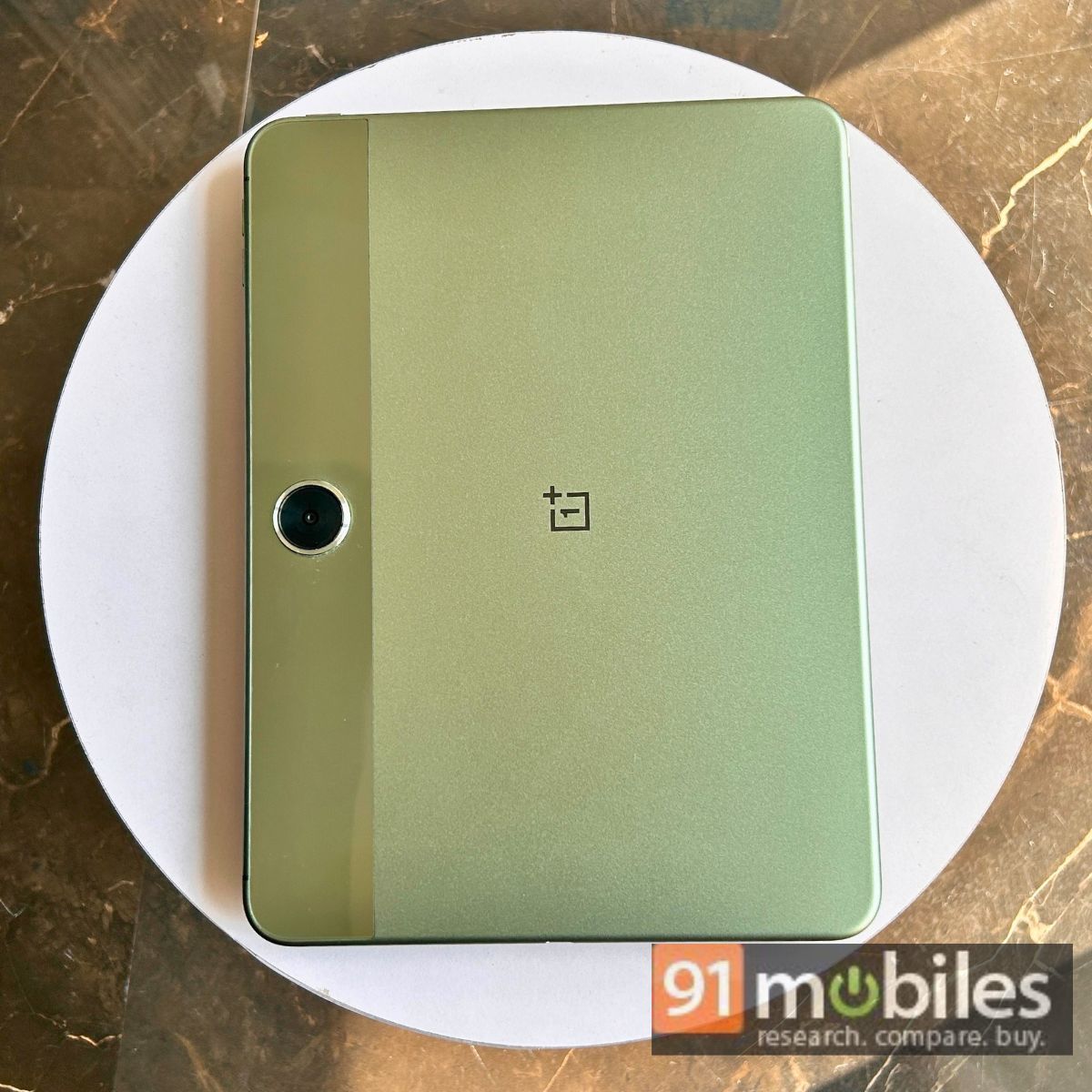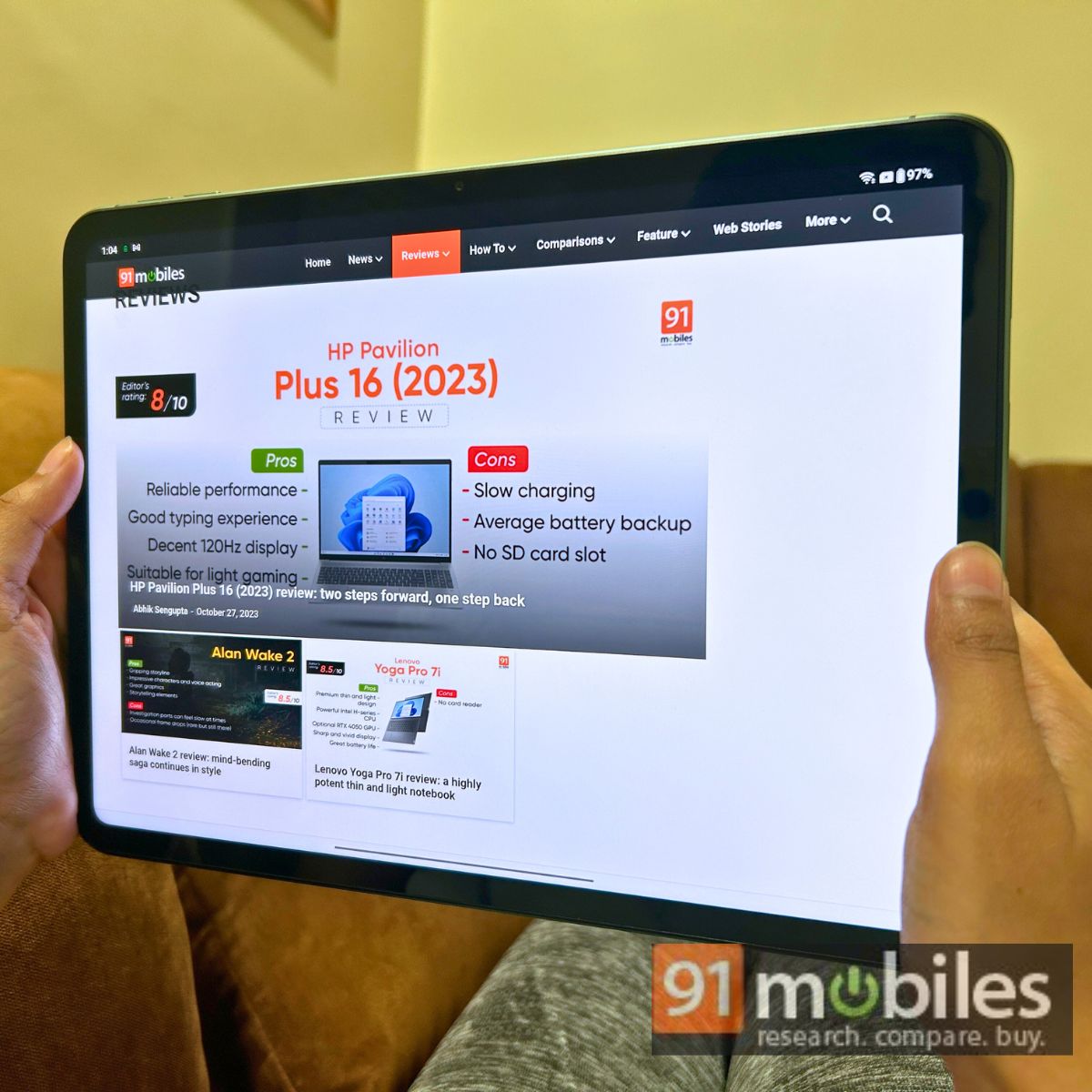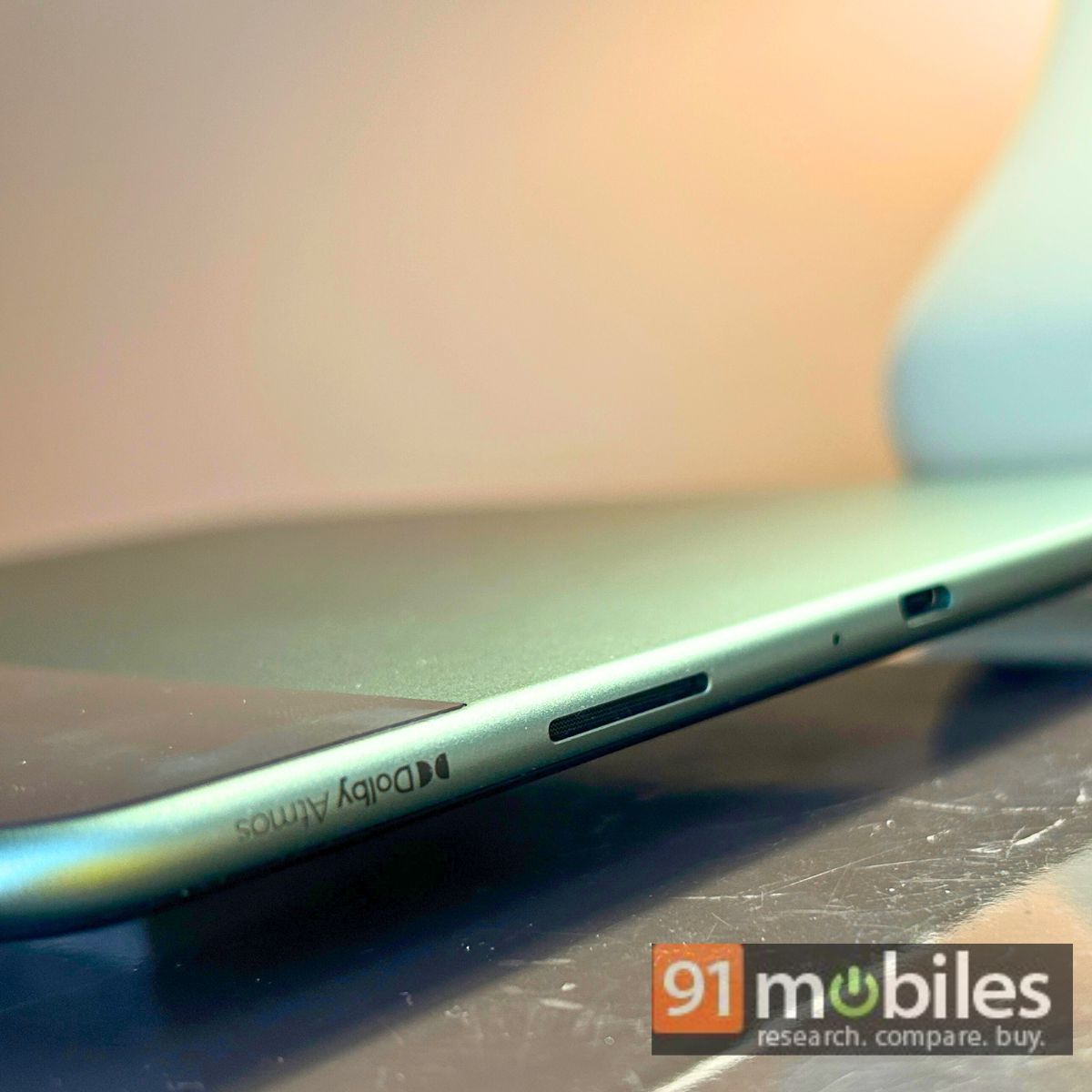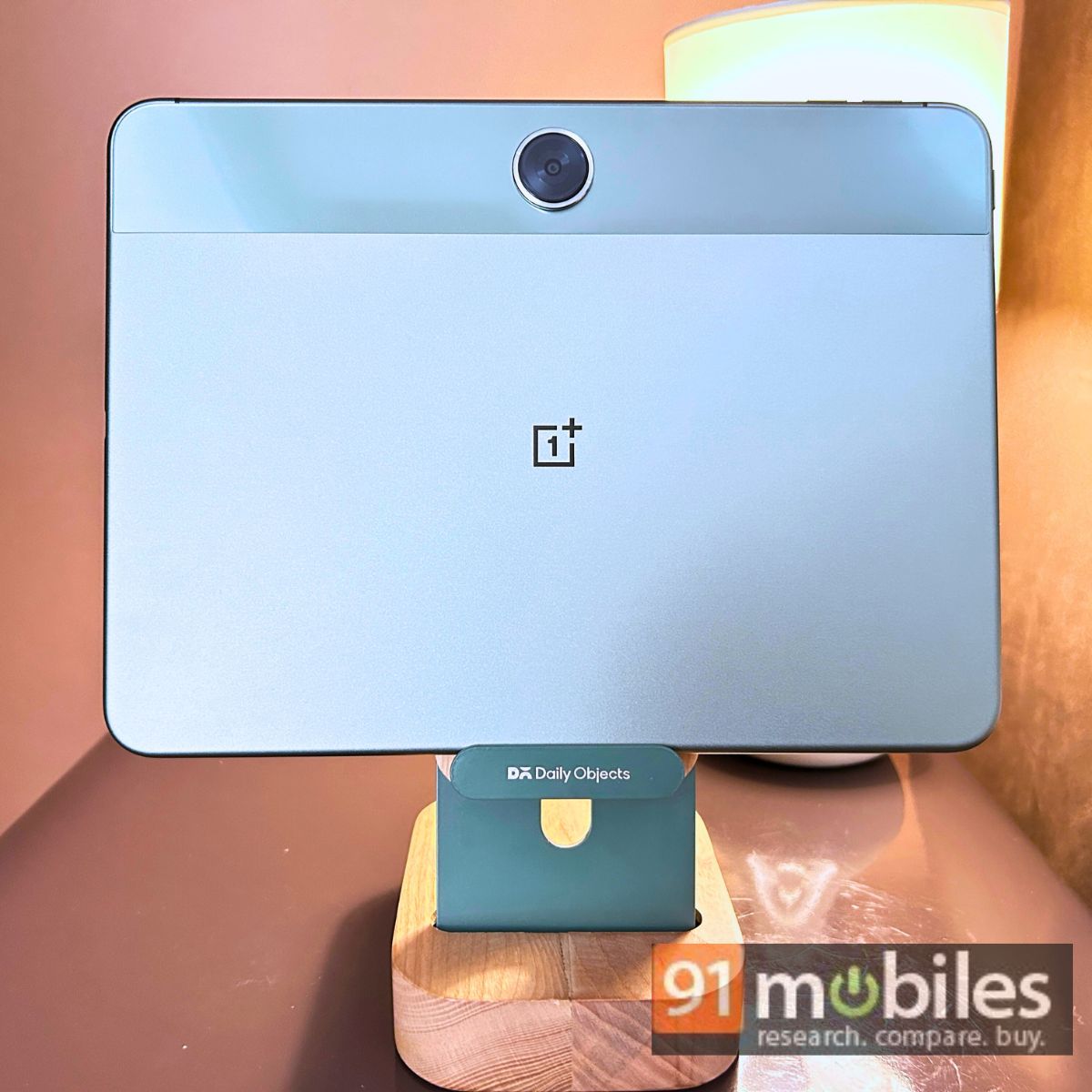The OnePlus Pad Go looks more or less similar to the OnePlus Pad that launched earlier this year, but the two Android tablets differ in many aspects. The most obvious is the price. The original OnePlus Pad (Rs 36,999 for 128GB storage) was launched to compete against high-end tablets, including Apple’s regular iPads and Samsung’s Galaxy Tab S tablets. On the other hand, the Pad Go at Rs 19,999 for the base 128GB Wi-Fi-only model is for the masses.
Naturally, OnePlus has cut down on a few features and specs as compared to its previous tablet offering to keep the price more aggressive. The new slate’s display and battery are smaller than that of the original Pad, and the charging speed is slower as well. The tablet incorporates a moderately powerful chipset from MediaTek that gets the basics done.
However, do not let the OnePlus Pad Go’s modest specifications discourage you. OnePlus has already made quite an impression this year with the OnePlus Pad, OnePlus 11, OnePlus Nord 3, and very recently, OnePlus Open. Can the Pad Go live up to the same reputation?
Design and display
The OnePlus Pad Go takes direct inspiration from its elder sibling. The rear panel retains a distinct centrally-aligned round cutout for the single 8MP camera. The front also houses the 8MP selfie camera in landscape orientation, which I find more convenient than the selfie camera in portrait orientation on the iPad. The back features a dual-tone finish, in this case, a mix of mint green and silver green, which OnePlus calls Twin Mint. While the material is polycarbonate, the smooth finish leaves a glass and metal-like finish, which I quite like. It’s a thoughtful decision by OnePlus to keep pricing aggressive but to maintain the aesthetic value.

The back, especially the glossy area around the camera, can attract a lot of fingerprint smudges. I’d advise you to consider the OnePlus Go Folio case, sold separately for Rs 1,399. The case also slightly increases protection from damage, including scratches.
I do not mind the similar design language between the original OnePlus Pad and the OnePlus Pad Go, as it can give users the same level of satisfaction even if they don’t opt for the more expensive tablet. OnePlus does the same for its flagship and R-series phones (for example, OnePlus 11 and OnePlus 11R). Samsung adopts a similar strategy of keeping a uniform design for its Galaxy smartphones.
We get all the standard ports on the sides, including power button, volume rockers, USB-C port for charging, and a SIM card slot (for the LTE variant). There’s also no headphone jack – a weird choice at this price point.

Moving to the display, I like the size but some features could’ve been better. The 11.3-inch IPS display offers 2.5K resolution (2,408 x 1,720) with a 90Hz refresh rate. I’d have preferred a 120Hz refresh rate, which most direct competitors offer. Brightness in a controlled environment is also adequate, but using the tablet outdoors under harsh sunlight is a hit-and-miss. I enjoyed reading on the Pad Go, but it’s high time that OnePlus considered adding a Reading Mode, which is already available on Xiaomi and Realme devices, for a better reading experience.
I also tested the display by watching Guns and Gulaabs and Chris Nolan’s Interstellar. Both have several scenes in low light and the OnePlus Pad Go calibrated colours well. The limitation of the IPS display is that the black spots could’ve been deeper. But all that gets masked by the impressive Dolby Atmos quad speakers.
Performance and software
Powering the OnePlus Pad Go is the MediaTek Helio G99, the same chipset that the Realme Pad 2 (review) uses. Apart from the base 128GB Wi-Fi-only variant, there’s an LTE variant with the same storage option at Rs 21,999. I used the top variant with LTE support and 256GB UFS 2.2 storage, which cost Rs 23,999. All the storage options have 8GB of LPDDR4X RAM.

In terms of benchmarks, the MediaTek Helio G99 attained average scores in Antutu, Geekbench 6, and PC Mark tests. Interestingly, the Realme Pad 2 with the same chipset scored higher in the same tests. Fortunately, the Helio G99 is also a very stable chipset with barely any signs of heating issues. The Snapdragon 695 SoC-powered Lenovo Tab M10 5G, which is also a OnePlus Pad Go competitor, attained relatively higher scores.
Beyond numbers, I did not face any major issues using the OnePlus Pad Go for a week, as long as the work was restricted to reading, mild gaming and watching movies. You can get some office or school work done by connecting a Bluetooth-enabled mouse and keyboard, but don’t get your hopes high. The two 8MP cameras are also average at best for video calls and quick photos. The images appear with a lot of noise despite good lighting conditions. The noise becomes more prominent in low-light conditions.
But I like the clean Software experience as the OnePlus Pad Go has fewer pre-installed apps. It ships with Android 13-based OxygenOS 13.2 and promised to get two years of updates. Some of the multi-tasking features, including the two-finger swipe to split screens, are taken directly from OPPO, but work smoothly. I prefer the addition of the taskbar at the bottom of the screen to quickly run my favourite apps. But some OnePlus popular smartphone features, like the Zen Space and Canvas AOD, are missing. The strength of the cellular network will vary upon the location. I used an Airtel connection and faced no problems as long as there was coverage. You can take calls, but that part is still buggy. I feel support for 5G could’ve given the OnePlus Pad Go an edge.
Battery life
The OnePlus Pad Go packs an 8,000mAh battery with support for 33W charging. The tablet takes roughly two hours to attain 100 percent charge with the bundled charger. 30 minutes of charging provided 30 percent battery levels during my review.

While the charging speed may not appear impressive, the good part is that the OnePlus Pad Go can easily last two days even with high levels of usage, including a high refresh rate enabled, movie viewing, gaming, and reading. To give you a perspective, I could binge-watch five 40-minute episodes of Guns and Gulaabs on Netflix, and there was roughly a 20-30 percent drop in charge. On-screen time came to roughly 10 hours.
Verdict
If you’re looking for a tablet for school or college work, my advice would be to go for a laptop priced around Rs 30,000, as there are some decent options. You can also refer to our Best Laptops under Rs 30,000 or Rs 40,000 lists. The Pad Go is best suited for infotainment and not office/school work. But remember that’s all the tablet offers, and if you want to get some creative work done, the Xiaomi Pad 6 (review) remains a solid choice. If you also want to spend less on an LTE tablet (at the cost of less RAM), the Realme Pad 2 is worth considering.

Overall, the OnePlus Pad Go is a good extension of your smartphone, especially if you want to declutter apps. It won’t disappoint for reading and movie-watching purposes, and proves to be a reliable choice for anyone looking for an affordable tablet.
Editor’s rating: 8 / 10
Pros
- Good display
- Clean Android OS
- Reliable speakers
- Solid battery backup
Cons
- Average charging speed
- No OnePlus keyboard or stylus support
The post OnePlus Pad Go review: a simple, reliable, affordable tablet first appeared on 91mobiles.com.
0 Comments